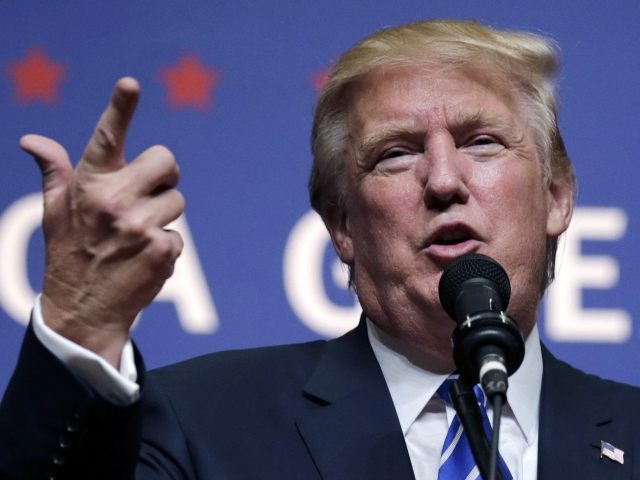Pundits are trying to explain why Donald Trump is at the top of the GOP’s polls, and many are grasping at the charge that he’s leading because of support from the “low-information voter.”
New York Times columnist David Brooks said, “Donald Trump’s voters are what they call low-information voters.” Cheri Jacobus, another pundit, also labeled Trump supporters also as “low information voters.”
Breitbart News took a deeper look at the first national poll following the August GOP primary debate and found the data disproves these claims.
The critical data is found in the crosstabs of the CNN/ORC poll, out after the Aug. 6th GOP debate.
At first glance, the critics’ claims are partly validated by the crosstabs, which show that Trump leads among voters who did not go to college.
But a second glance shows he also leads among voters who did go to college.
At the invitation of Breitbart News, veteran Republican strategist Jim Innocenzi checked the data. He argues that many polls have a sample size that is too small to reliably gauge the preferences of subgroups, such as college voters. But the CNN poll has enough respondents to derive useful conclusions, he said.
“When you look at the college [versus] no college [support], Trump is at 24 [percent overall] as an aggregate. He’s at 30 percent no college, he’s at 21 percent attended college. That’s a nine-point difference,” he said.
“But you look at Jeb Bush and you can make the same argument. He’s at 13 percent [overall], he’s at 17 percent no college, 10 percent college. That’s a 7 point difference,” Innocenzi said.
“You can’t say that Trump is only attracting low information voters… because it’s not true,” he added. “He’s 2 to 1 over Bush on those that attended college.”
Bush and Trump seem to both do better among non-college voters, in part, because the GOP’s base has been skewed towards non-college voters since the 1980s, when people with post-graduate degrees shifted from the GOP to the Democratic Party.
In general, the two parties evenly split the votes of college grads, but the Democratic Party claims a strong advantage from the increasing number of people with post-graduate degrees. In 2012, for example, President Barack Obama won 47 percent of the vote from people with college degrees and 55 percent of the vote from people with post-graduate degrees. Correspondingly, the GOP got 61 percent of votes from non-minority people who didn’t go to college.
Emily Ekins, a Research Fellow at the Cato Institute, also reviewed the CNN/ORC poll.
Because “the margin of error is wider for [subgroup] responses among college and non-college graduates in national polls, which means it’s harder to say with certainty if Trump does better among less educated voters,” she said, agreeing with Innocenzi.
But other polls also suggest that Trump consistently does better among non-college graduates, she said. “It’s pretty clear that Trump performs better among less educated voters, but it remains unclear how much of an advantage he has among non-college grads compared to college grads,” Ekins explained.
A Quinnipiac national poll, which came out after the CNN poll, suggests that voters with college degrees consistently support Democrats over Republicans. But that poll is not large enough to reliably reveal the difference in support for Trump and Bush among the subgroups of non-college and the college-grad respondents.
“I would put more stock in the private polls the campaigns are doing rather than the public ones,” Innocenzi concluded. “The campaigns need to get their metrics right, the others not so much.”

COMMENTS
Please let us know if you're having issues with commenting.